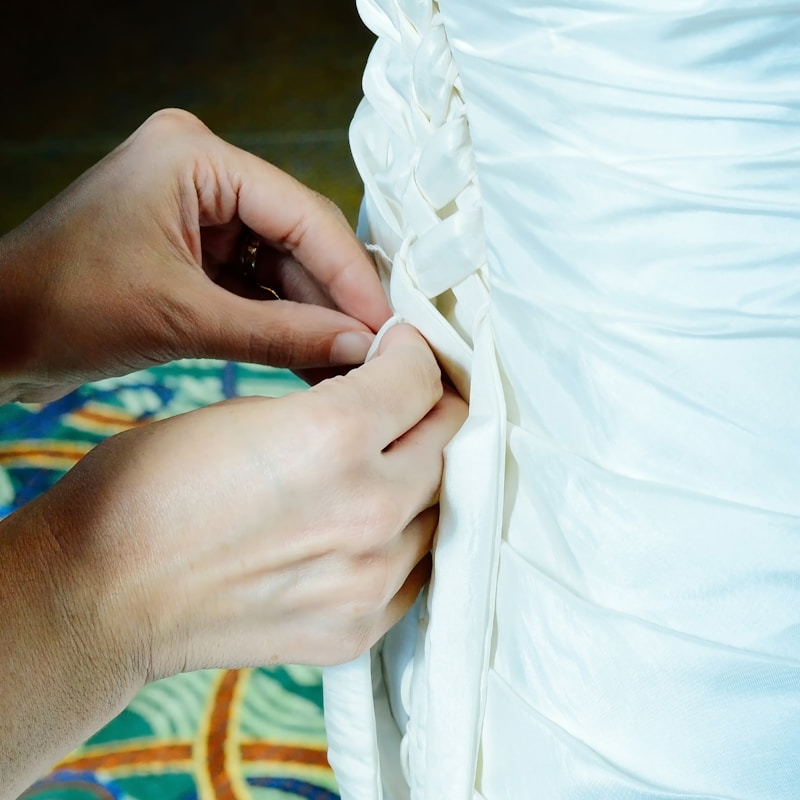The Importance of Wedding Gown Alterations: Ensuring the Perfect Fit for Your Big Day
The Importance of Wedding Gown Alterations: Ensuring the Perfect Fit for Your Big Day
Every bride dreams of looking stunning on her wedding day, and one of the key elements that contribute to this vision is the wedding gown. However, what many brides often overlook is the importance of wedding gown alterations. A gown that is not altered to fit perfectly can detract from the overall elegance of a bride's appearance, leading to discomfort and dissatisfaction. In this article, we will explore the significance of wedding gown alterations, the process involved, common issues faced, and tips for ensuring the best results.
Why Are Wedding Gown Alterations Important?
Wedding gown alterations are crucial for several reasons:
- Perfect Fit: Every bride has a unique body shape, and Wedding gowns are usually designed for a standard fit. Alterations ensure that the dress hugs the body in all the right places, enhancing your silhouette.
- Comfort: A well-fitted gown allows for easier movement, making it more comfortable to wear throughout the day, especially during activities like dancing or sitting.
- Style Adjustment: Modifying the gown can help achieve your desired style, whether it be changing the neckline, adjusting the length, or adding unique embellishments.
- Correcting Manufacturing Flaws: Even high-end gowns can come with issues such as uneven seams or misplaced embellishments, necessitating alterations to ensure a polished look.
Common Alterations Brides Consider
Here are some of the most common alterations brides may need to consider for their Wedding gowns:
| Alteration Type | Description |
| Hem Adjustment | Shortening or lengthening the gown to match the bride's height. |
| Waist Adjustment | Tightening or loosening the gown around the waist for a better fit. |
| Strap Alteration | Adjusting the length of straps for comfort and proper support. |
| Neckline Modification | Changing the shape or depth of the neckline to suit the bride's preferences. |
| Additions | Incorporating details like lace, beading, or capes for a customized look. |
The Alteration Process
The wedding gown alteration process typically involves several steps:
- Initial Fitting: Schedule an appointment with a skilled seamstress to determine what alterations are needed. It’s crucial to wear the undergarments and shoes you plan to use on your wedding day.
- Pinning and Marking: The seamstress will pin and mark the areas that need adjustments. This ensures that any changes made reflect the bride's specific preferences.
- First Round of Alterations: After the initial fitting, the seamstress will make the primary alterations and schedule a follow-up fitting.
- Final Fitting: During the final fitting, necessary adjustments are made. This is the opportunity to try on the gown along with your accessories to ensure everything complements each other.
- Final Touches: Additional details like steaming and final cleaning may also be done to prepare the gown for the wedding day.

Tips for Successful Alterations
To ensure your wedding gown alterations are successful, consider the following tips:
- Start Early: Begin the alteration process as soon as you receive your gown. This allows ample time for multiple fittings and adjustments.
- Choose the Right Seamstress: Do thorough research and read reviews to find a reputable seamstress with experience in wedding gown alterations.
- Communicate Clearly: Share your vision and specific requests with your seamstress. Bring pictures or examples of what you want to help convey your style.
- Consider Your Comfort: As important as style is, comfort should not be sacrificed. Ensure that you can move freely and be at ease in your gown.
- Plan for Future Alterations: If you plan to lose weight or may want to wear the gown again, discuss options with your seamstress so adjustments can be made accordingly.
What to Avoid When Altering Your Wedding Gown
While alterations are essential, there are also some pitfalls to avoid:
- Last-Minute Alterations: Avoid scheduling alterations too close to your wedding date; this can lead to rushed decisions and potential mistakes.
- Ignoring the Fit During Fittings: Always assess how the gown feels during fittings, and do not hesitate to ask for additional adjustments if needed.
- Not Trying on Accessories: Ensure you try on your accessories, like the veil and shoes, during fittings to see how they align with your gown's fit.
Conclusion
In summary, the importance of wedding gown alterations cannot be overstated. A well-altered gown can significantly enhance a bride's confidence and comfort on her special day. By understanding the alteration process, common modifications, and how to avoid pitfalls, brides can ensure that their gown fits perfectly. Remember, a well-fitted gown not only looks beautiful but also helps create lasting memories as you walk down the aisle. So, invest the appropriate time and resources into your gown alterations, and you will certainly love the result!
As you approach your wedding day, keep these tips and considerations in mind to make the most of your alteration experience and achieve a flawless final look. Your wedding gown should be a reflection of your unique style and a key element to your unforgettable day.
